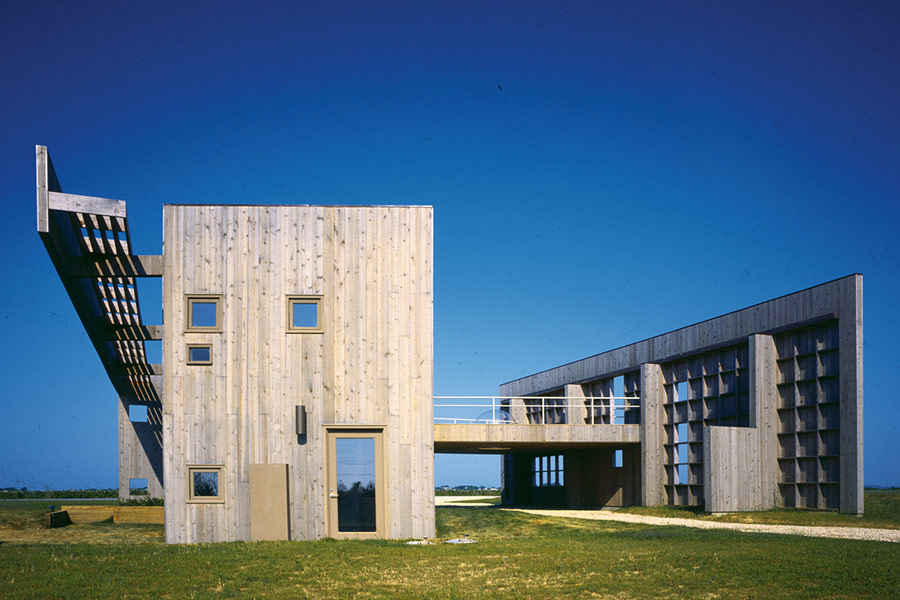
30 Years of Emerging Voices:
Idea, Form, Resonance
The Architectural League of New York
New York: Princeton Architectural Press, 2015
Billie Tsien, president of the Architectural League of New York, sets the tone of
30 Years of Emerging Voices: Idea, Form, and Resonance
in her foreword to this book that recognizes over 250 North American practitioners and firms who have presented their work in the League’s Emerging Voices program since its inception in 1982. The lecture series was launched “to provide an opportunity for promising younger practitioners to present exceptional and challenging work to their peers and the greater design community”. Tsien’s esprit is one that considers the first thirty years of the Emerging Voices lecture series as a process of learning, evolution, possibility, and friendship. This compendium—consisting of a collection of essays, firm profiles, commentaries, drawings, renderings, and photographs—celebrates the revelation of original ideas and the League’s intuition regarding the discovery of talent that would prove to have significant impact on discourse and form.
In her introduction, Anne Rieselbach, editor and director of the program since 1986, elaborates on the diversity of the work over time and provides context for the projects and their surrounding theoretical discourses in terms of era, theme, practice, place, and style. As she suggests, “Whether reviewing the work chronologically or thematically, the topics of inquiry are boundless, from modes of practice and the impact of contemporary theory and pedagogy to typological variations, approaches to material experimentation, and the influence of region and place.” One can pick up the book and turn to any page and be the arbiter of his or her own destiny in time travel. The book features work by Susana Torre, Laurinda Spear, Ronald A. Krueck, Merrill Elam and Mack Scogin, Coleman Coker and Samuel Mockbee, Enrique Norten, Audrey Matlock, Monica Ponce de Leon, and Nader Tehrani, to name only a few. The range of work is both phenomenal and breathtaking.
Rieselbach’s reading of the critical voices that give “clarity and coherence” to this extensive collection of work introduces thematic identities that form the subtextual terms of this examination: Architecture’s relationship to tectonics and place, the professional and personal impact of public recognition, the identification of challenging ideologies, and the influence of contemporary issues on each five year segment. These identities are directly expanded upon in essays by Ashley Schafer and Reed Kroloff. Kroloff, in “Form: Process, Place, Production,” suggests that the Emerging Voices program could be characterized by its remarkable “prescience” concerning designer selection, as many have become “some of the most influential architects practicing today.” His list includes: Steven Holl, Tod Williams, Thom Mayne and Michael Rotondi, Andrés Duany and Elizabeth Plater-Zyberk, and Eric Owen Moss. Thomas de Monchaux, in his commentary on the period between 1994 and 1998, observes in a manner of monologue intérieur, that the role of technology, specifically computation and digital fabrication, has also had an impact on consciousness and practice. Additional essays by Henry N. Cobb, Paul Makovsky, Alexandra Lange and former AN Executive Editor Alan Brake continue to elaborate on the Voices occurring within specific timeframes and what their respective histories have to teach us about authorship, partnerships, ideological positions, regionalism, “stylistic indulgences,” the digital revolution, environmental impact, and the notion of “joint creativity.” While the firms and projects documented provide material for comment, the essays themselves are instrumental in describing context. The end result is ultimately a very clear snapshot of where the field of architecture and its associated discourse have gone during the past thirty years. Possibly more importantly, it also addresses how we explain the forces that inspired said creativity.
One of the greatest things about this book is the frequency with which one rediscovers an architect or project long forgotten—it is as if you, the reader, are looking through a family photo album, and you can almost remember where you were at the time of a project’s publication; what you may have been wearing; a smell; songs you would have been listening to; or an era from your own experience or past that says as much about who you are as it does about the designer, project, or its significance. In this way, as one flips through 30 Years of Emerging Voices, there is an opportunity to examine how this work over time influenced your own work or practice, and most importantly, how it may have inspired your own sense of personal evolution and growth. This interconnectivity or familiarity, this sharing, reminds us of the League’s mission to encourage and nurture excellence in architecture, design, and urbanism. Tsien’s invocation of Wendell Berry ultimately captures this book’s unbelievable charm:
We clasp the hands of those
Who go before us, and the hands
Of those who come after us;
We enter the little circle
Of each other’s arms…
In the end, the voices condense in and what we are left with is not so much an underscoring of individuals but a digestible artifact, a carousel of recollections as well as predictions that, as a depository of recent history, belongs on every architect’s shelf and should serve at least in some sense as a formidable point of departure for us all.